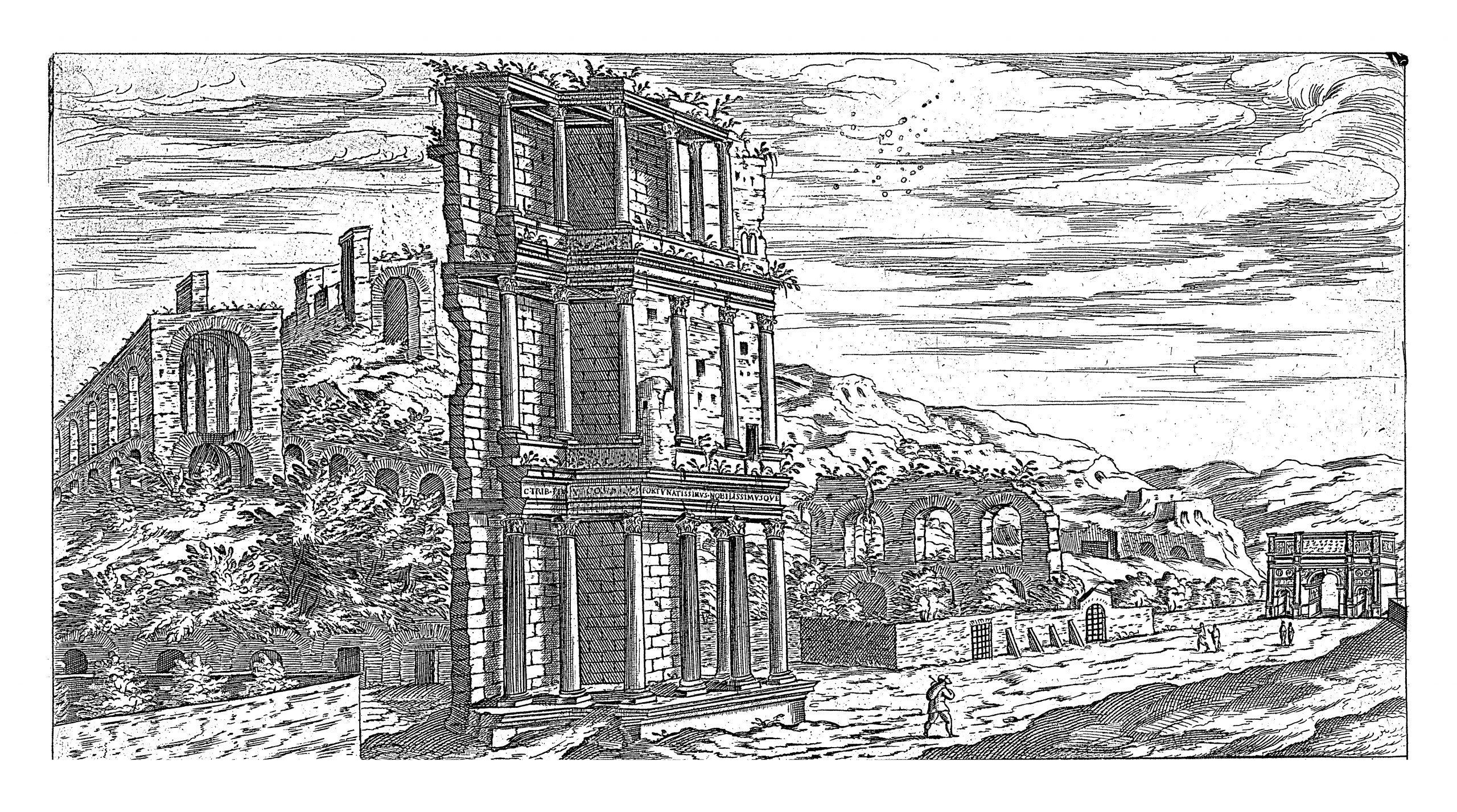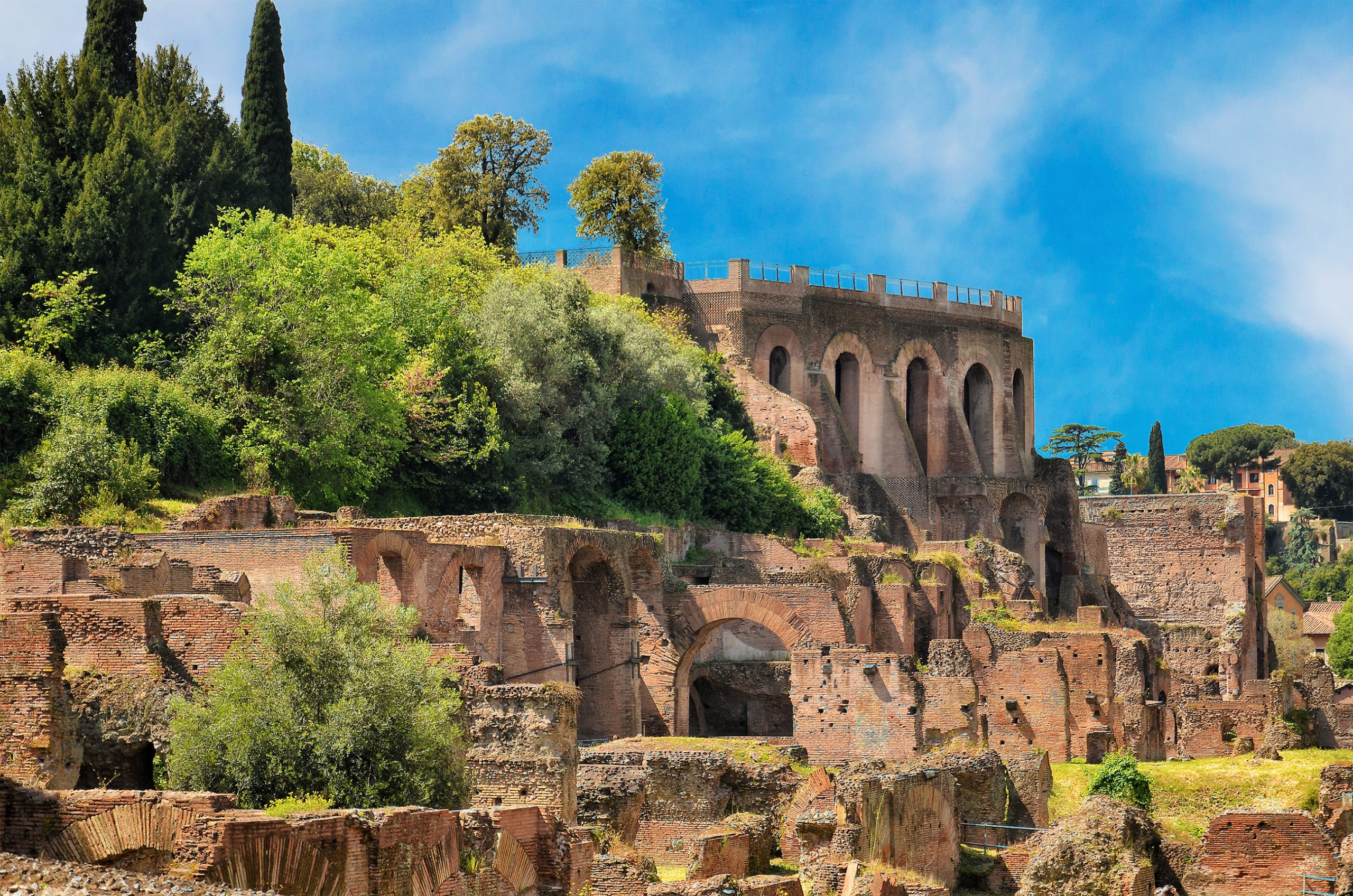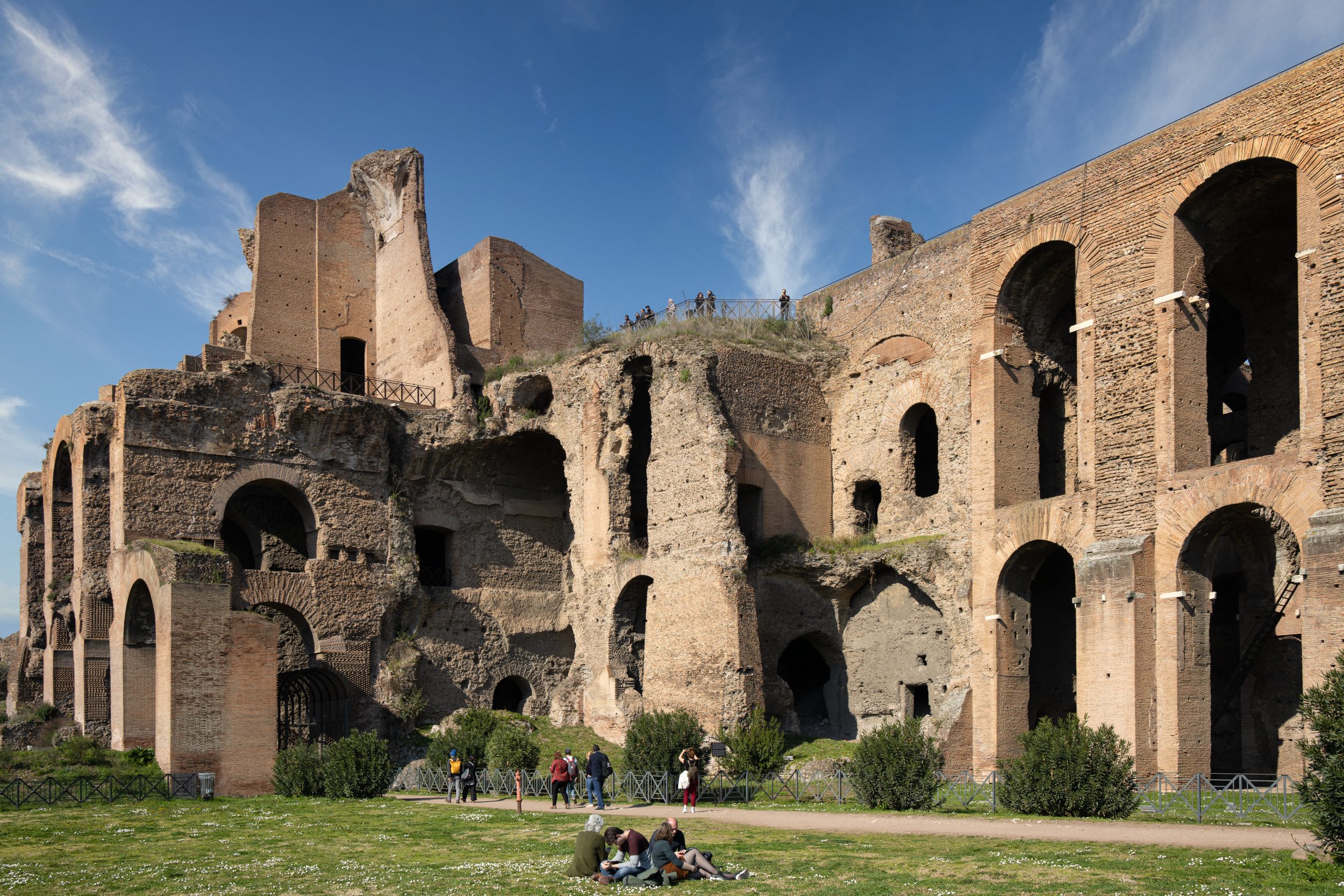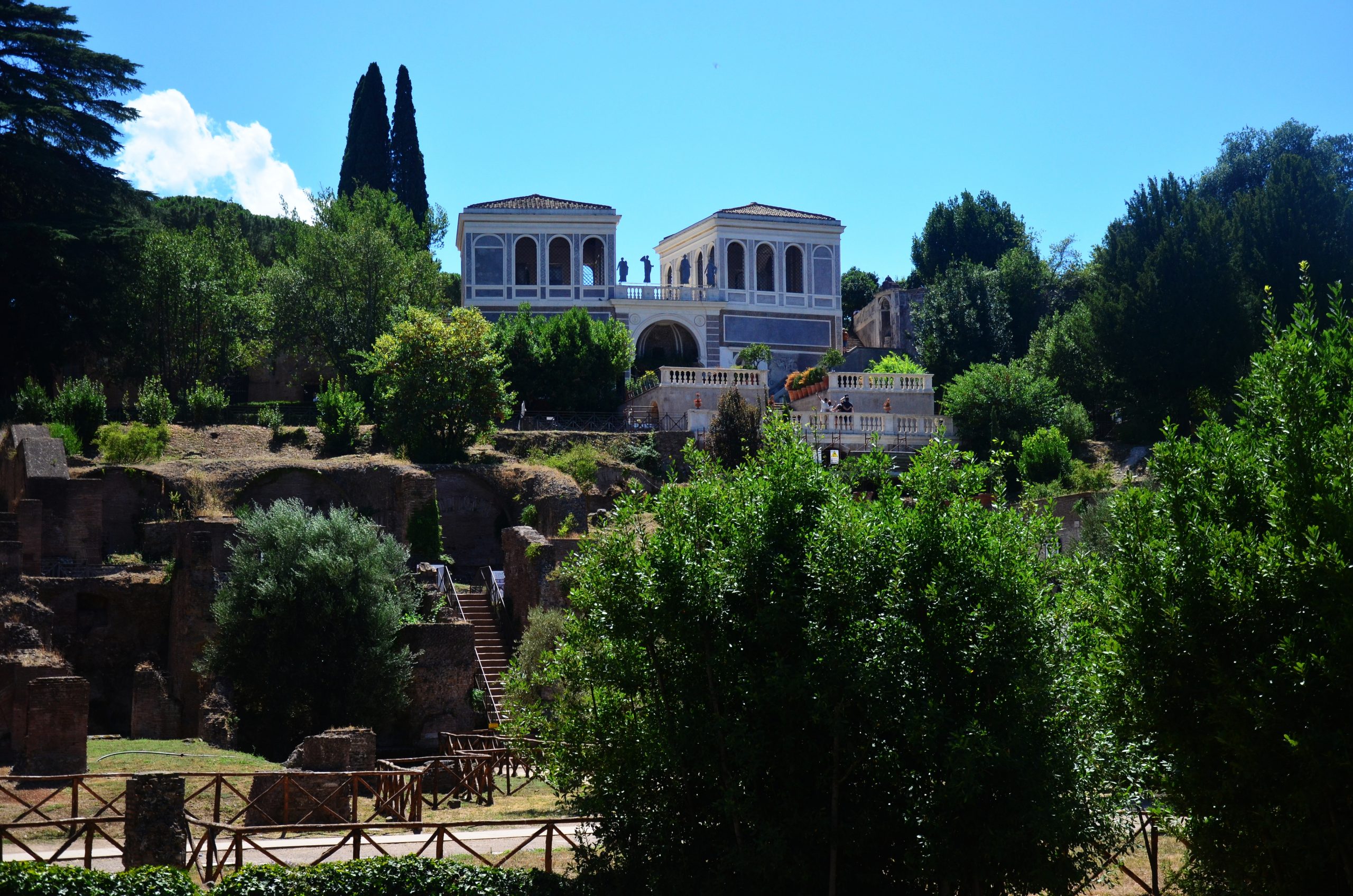DOMUS SEVERIANA
The Domus Severiana, was the final expansion of the Palatine’s imperial palaces made by Septimius Severus, he extended the palace behind Domitian’s stadium. The brick remains of the palace can be found on the south-eastern side of the Palatine Hill and, although stripped of their extravagance, still stand with awe inspiring majesty. These are the most striking views of the Palatine from the Aventine or Circus Maximus immortalised in photographs and on postcards.


Septimius Severus was the first African to become emperor, The son of an equestrian from the Roman colony of Leptis Magna (Libya), he was emperor from 193 to 211 AD. At the time he was governor of Upper Pannonia (today Austria and Hungary) and commander of the largest Roman army on the Danube, his troops named him emperor. He founded the Severan dynasty and converted the government into a military monarchy, giving more power to the military and ignoring the senate. His reign marks a critical stage in the development of the absolute despotism that characterized the later Roman Empire. His descendants were ousted one after another and reigned for no more than a few years each until the Severan reign ended in 235 AD
Severus made a number of extensions to the Domus Augustana, further extending the reach of the Palatine. He used the existing baths of Domitian to build an enormous imperial terrace which allowed him and his guests an unencumbered view of the chariot races and events in the CIRQUE MAXIME below and built the exedra we see today on the side of Domitian’s stadium/garden and the Severan baths behind.
THE SEPTIZODIUM
According to sources the most impressive structure he commissioned was the Septizodium – a majestic nymphaeum-façade with columns and fountains on several levels, built on the south-eastern side of the hill in 203AD. It was a scenic entrance to the palace, a monumental water structure, which may have contained the statues of the seven planetary deities of Saturn, Sun, Moon, Mars, Mercury, Jupiter and Venus (septizodium means sevens suns). Ancient sources say it was intended to impress Severus’ fellow north Africans as they entered the city, on the Via Appia. Other examples of septizodia are known, all from Africa. Ancient sources say the majestic building was a popular meeting place for some time.

Nothing remains of the structure except some brick stumps and it is only known from Renaissance drawings. In 1588, during the reign of Pope Sixtus V, the eastern facade of the building was demolished for numerous building works. Rodolfo Lanciani, an Italian archaeologist traced more than ten buildings and monuments with stone from the Septizodium; “the works cost the Pope 905 scudi, abundantly compensated by the proceeds in peperino, travertine, rare marbles and columns – in short, extreme vandalism”.


